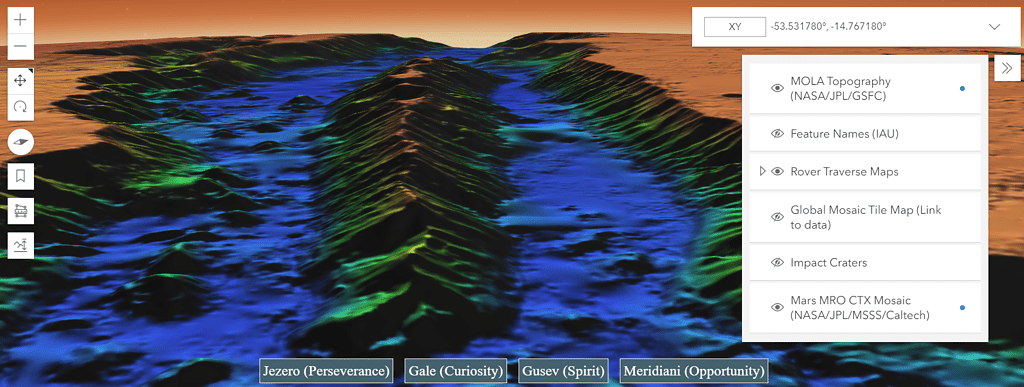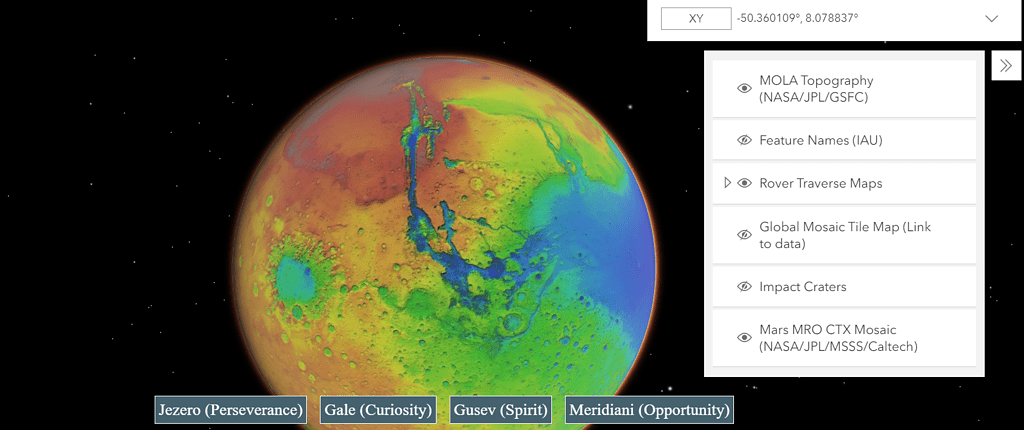The Red Planet has captivated the imagination of humanity for centuries, and thanks to NASA’s Mars Reconnaissance Orbiter, we now have a new global image of Mars that is available to both scientists and the public. The Caltech-created mosaic captures the stunning cliffsides, impact craters and even dust devil tracks of Mars in remarkable detail.
The Global CTX Mosaic of Mars is a monumental achievement, composed of 110,000 images taken by MRO’s Context Camera, or CTX, covering nearly 270 square feet (25 square meters) of surface per pixel. This makes it the highest-resolution global image of the Red Planet ever created, with a mind-boggling 5.7 trillion pixels.

The mosaic is the result of Caltech’s Bruce Murray Laboratory for Planetary Visualization dedication. The group spent six years and tens of thousands of hours developing it. The project was led by image processing scientist Jay Dickson, who aimed to make the mosaic accessible to all.
“I wanted something that would be accessible to everyone,” said Dickson, who also manages the Murray Lab. “Schoolchildren can use this now. My mother, who just turned 78, can use this now. The goal is to lower the barriers for people who are interested in exploring Mars.”
The CTX is one of three aboard MRO, and its unique ability to capture large expanses of the landscape has made it particularly useful for spotting impact craters on the surface. The images it captures provide a broader view of the terrain and displays impact craters, helping scientists understand how different features on the surface are related to each other. Another MRO camera, the High-Resolution Imaging Science Experiment (HiRISE), provides color images of surface features as small as a dining room table. A third camera, the Mars Color Imager (MARCI), produces a daily global map of Mars’ weather at a much lower spatial resolution.
Creating the new mosaic was no small feat. Dickson developed an algorithm to match images based on the features they captured, manually stitching together the remaining 13,000 images that the algorithm couldn’t match. The remaining gaps in the mosaic represent parts of Mars that hadn’t been imaged by CTX by the time Dickson started working on this project or areas obscured by clouds or dust.
Despite the challenges, the new mosaic is a triumph of both art and science. Mars scientists as well as the public have already found it to be an invaluable tool, allowing them to visit their favorite spots on Mars and explore the Red Planet like never before. The tool also shows rovers and the routes they have taken while doing their research.
“For 17 years, MRO has been revealing Mars to us as no one had seen it before,” said the mission’s project scientist, Rich Zurek of JPL. “This mosaic is a wonderful new way to explore some of the imagery that we’ve collected.”
As we continue to explore and learn more about Mars, this new global image will undoubtedly play a crucial role in our understanding of the Red Planet.











